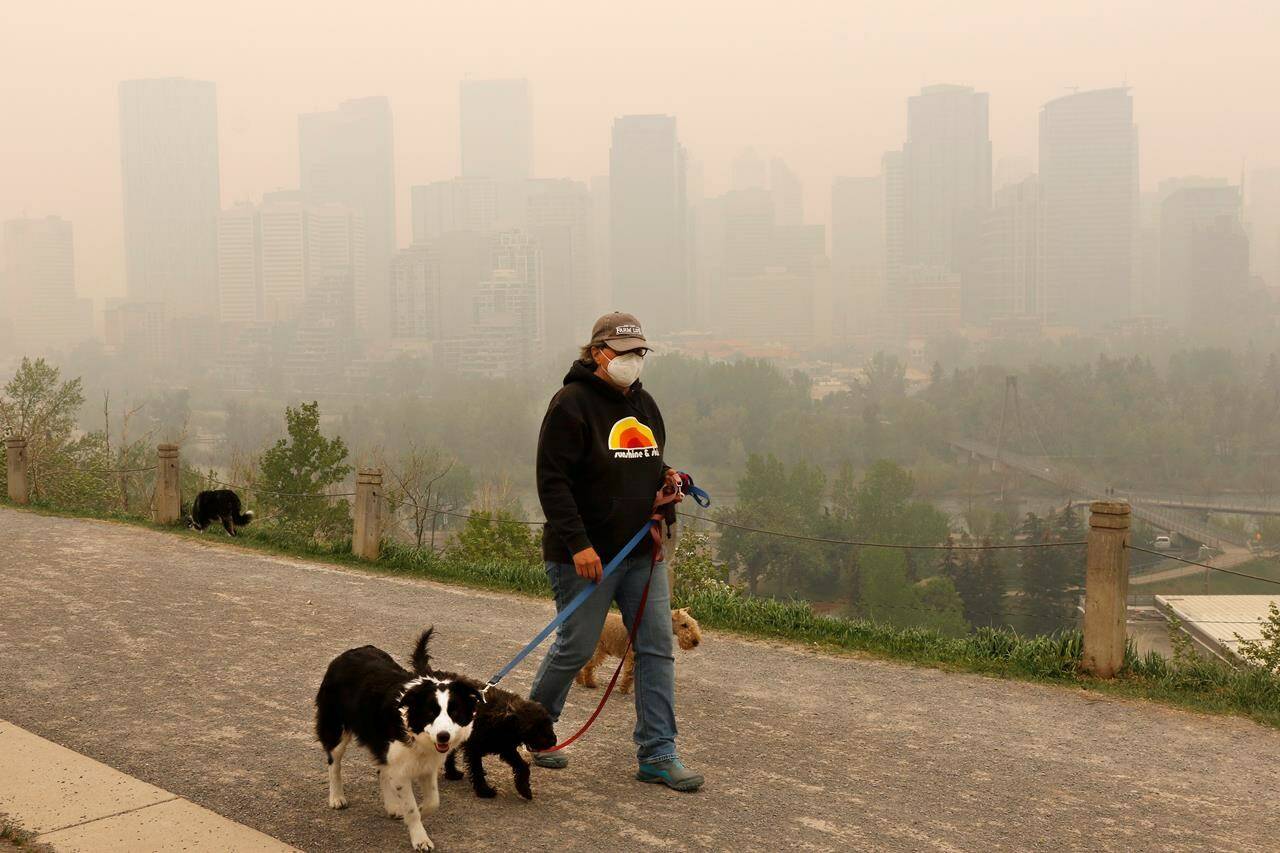Dr. Alex Chee isn’t letting his two toddlers play outside while wildfire smoke continues to pollute the air in Calgary.
“It smells better than it did yesterday,” Chee, a respirologist at the University of Calgary, said by phone Thursday.
But children, elderly people and adults with existing lung conditions such as asthma or chronic obstructive pulmonary disease (COPD), should “stay inside until they stop smelling smoke, essentially, in the air,” he said.
As of Thursday afternoon, smoke from ongoingwildfires continued to put people at “moderate” to “high risk” from poor air quality in Manitoba, Saskatchewan, Alberta and British Columbia, according to Environment and Climate Change Canada’s Air Quality Health Index.
Those planning to be outdoors in affected areas this long weekendshould first check their local air quality rating and “plan the activities accordingly,” said Environment Canada meteorologist Carmen Hartt.
Even healthy people should try tostay indoorswhile smoke particles affect air quality, Chee said.
“The concern is that these particles in the air can go deep into your lungs and they can irritate the lungs,” he said.
“(They) can cause inflammation not only in the lungs themselves, but can actually cause some stress in your heart too, because inflammation can affect the heart.”
If people mustgo outside, an N95 or KN95 mask can protect them from smoke particles, Chee said.
Although surgical masks won’t provide the same degree of protection, they’re alsoworth wearing, he said.
“Something is better than nothing. So a mask that basically can filter some of the air that you’re inhaling should help,” Chee said.
Linsey Marr, a professor of civil and environmental engineering at Virginia Tech who studies particle transmission, said smoke particles are similar in size to respiratory particles that carry viruses.
The reason smoke is visible while viruses aren’t, she said, is due to the sheer volume of smoke particles.
“Just like for COVID-19, you’ll get more protection (from smoke) if it is a high-quality mask that fits well,” Marr said.
An N95 or KN95 will provide the most benefit, she said, but surgical masks could still reduce exposure by 20 to 50 per cent.
Neither type of mask protects against various gases found in wildfire smoke, the Public Health Agency of Canada and Environment and Climate Change Canada said in an emailed statement — but they noted that the smoke particles they do filter “generally pose the greatest risk to health.”
There are also measures people can take to maximize their air quality inside, both Chee and Marr said.
In addition to keeping doors and windows closed, air purifiers can help, they said.
The most effective units are HEPA — or high efficiency particulate air filters — and filters with a MERV — or minimum efficiency reporting value — rating of 13 or higher.
Air conditioners in homes and cars should always be set to “recirculate” so they don’t bring polluted air in from the outside, the Canadian Lung Association said on its forest fire information web page.
The lung association also said that smoke in the air can trigger asthma attacks, worsen COPD and worsen pneumonia. People with lung illnesses should always have their inhalers with them and get medical attention if their symptoms don’t improve with their normal medications.
“Symptoms to watch for include: increased wheeze, cough, shortness of breath and chest heaviness,” the association’s website said.
—By Nicole Ireland, THE CANADIAN PRESS
READ MORE: Air-quality expert says risks underestimated as wildfire smoke descends across B.C.
READ MORE: B.C. residents right to blame smoke for recent feeling of fatigue

